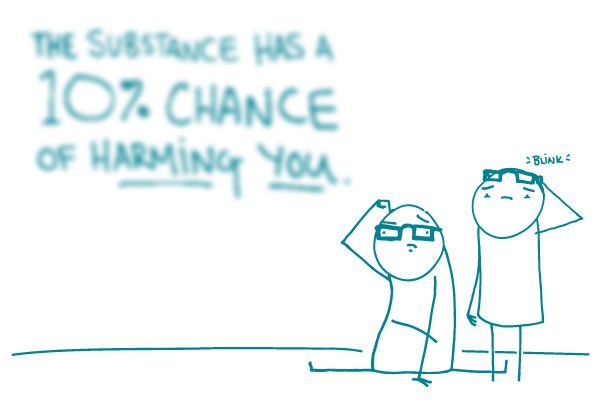
Wouldn’t it be great if science always gave us simple answers? You run some tests, look at some data, and BAM! — you arrive at a straight-forward, easy-to-understand conclusion (think “the world is round”).
As it turns out, science rarely works that way. Most studies reveal a whole bunch of complicated results. Like, “the substance has a 10% chance of harming you,” or “1 out of 4 study participants had fewer symptoms after taking the medicine.” In other words, they’re fuzzy.
As health communicators, we’re often charged with explaining these fuzzy findings. But how do you do that and still keep your message clear?
The key, as usual, is to think about your audience.
Do your readers want to know that 7 out of 10 studies show that 95% of people with a certain condition who took a drug had side effects, but were also 25% less likely to go to the emergency room? Probably not.
Rather, your readers want to know what the studies mean for them. It’s up to you to tease meaning out of these findings and translate them into plain language.
So, instead, you might say:
Some people who take this medicine don’t have as many flare-ups of their condition, so they’re less likely to need an emergency room visit. But most people who take the drug have side effects, like feeling dizzy or coughing. Talk to your doctor to see if the drug is the right choice for you.
Even if findings are complicated, they don’t need to be confusing.
The bottom line: You don’t have to relay the nitty-gritty of complicated scientific findings. Instead, write about what the findings mean for your reader.
Browse recent posts